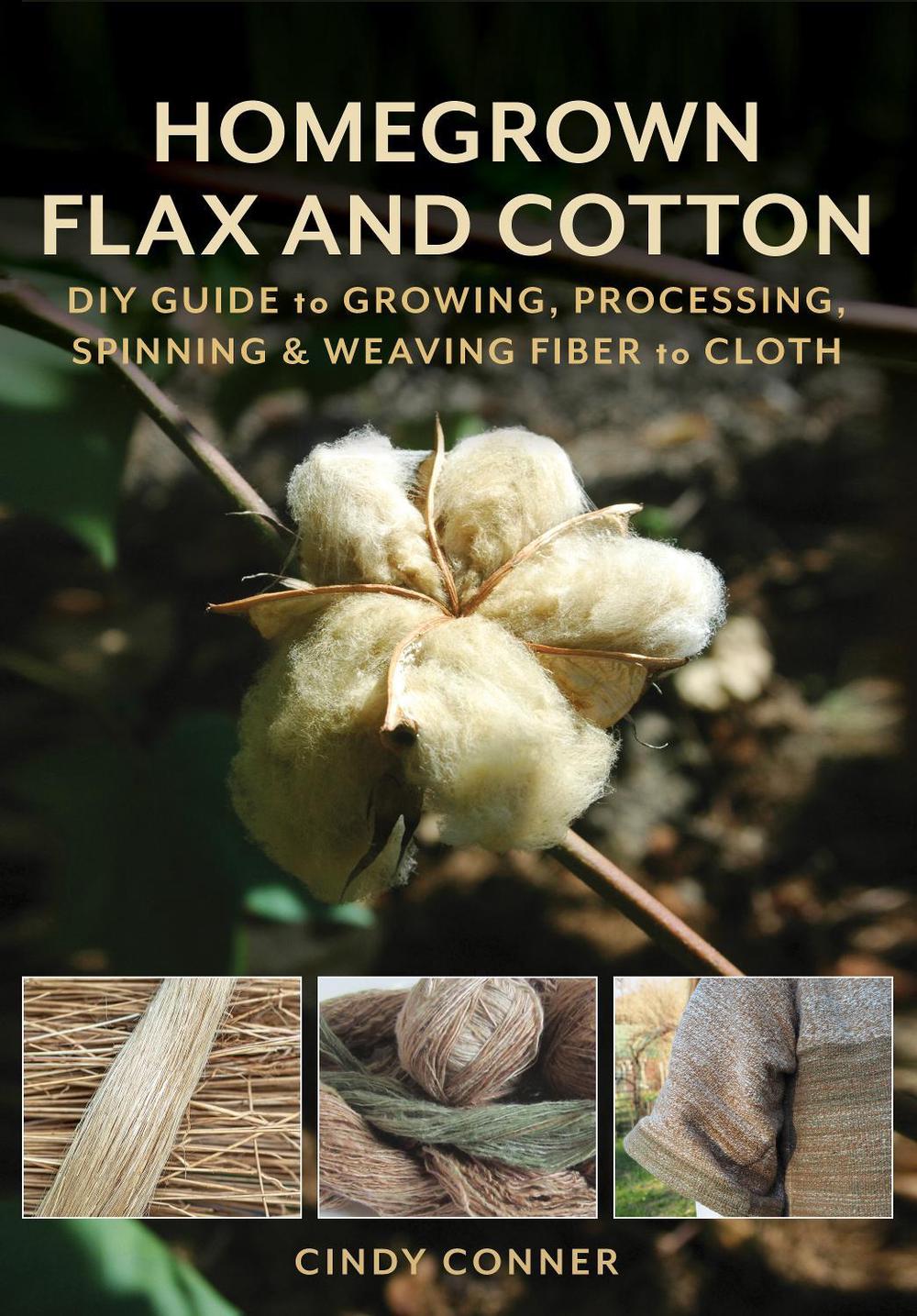
Homegrown Flax and Cotton
diy guide to growing, processing, spinning & weaving fiber to cloth
$64.86
- Paperback
152 pages
- Release Date
30 June 2023
Summary
From Seed to Shirt: Grow Your Own Sustainable Wardrobe
Grow your own sustainable clothes!
From seed to shirt, Cindy Conner shows you how to plant, grow, harvest, process, spin, and weave cotton and flax into cloth from which you can sew your own clothes. And since cotton and flax are made from plants, when your clothes’ usefulness has passed they can also return to the environment without causing harm–a truly renewable and sustainable option for clothing.
Whether you…
Book Details
| ISBN-13: | 9780811772198 |
|---|---|
| ISBN-10: | 0811772195 |
| Author: | Cindy Conner |
| Publisher: | Stackpole Books |
| Imprint: | Stackpole Books |
| Format: | Paperback |
| Number of Pages: | 152 |
| Release Date: | 30 June 2023 |
| Weight: | 381g |
| Dimensions: | 249mm x 178mm x 8mm |
What They're Saying
Critics Review
Many of us enter into the world of fiber after seeing either a knitted or woven garment that sparks a desire to make yarn or weave cloth. Cindy Conner began with cotton seed. Her experiences growing cotton led Cindy to learn to spin, and spinning the fiber into yarn spurred her desire to make her own clothing by learning to weave. She wanted to “grow her own clothes” and this book is a record of the steps she took that resulted in her wonderful home grown items of clothing.
Cindy’s background in sustainable agriculture along with having taught at a community college provided her with the experience to grow cotton and later to experiment with flax. Her understanding of the many moral and environmental issues embedded in the commercial production of cloth was a factor in wanting to make clothing using materials produced on her Virginia farm. There are parallels in Cindy’s process with the burgeoning “Farm to Table” movement of the early 1990s and to the more recent growth of Fibershed.
The book begins with flax–growing, harvesting and processing it–so that it can be spun into linen. Cindy provides suggestions and clear guidance for making your own specialized flax processing tools. Next, the book describes methods for growing and harvesting cotton with attention to the same details, as well as the preparation for spinning. Cindy describes spinning flax on both a spindle and a wheel. Her preferred method of spinning cotton is using a Tahkli support spindle or a Charkha. Throughout the book, she focuses the discussion to specific tools and methods that she uses and is familiar with.
A particularly welcome chapter near the end of the book introduces readers to the benefits of guilds, fiber festivals, classes, and workshops. Cindy describes how joining a local spinning guild, and later a weaving guild, was an integral part of her growing confidence as a spinner and weaver with the ability to grow her own clothes. These benefits cannot be overstated.
The strongest sections of the book are the chapters describing the growing and processing of flax and cotton. Useful information includes a record of her experimentation with growing natural colored cotton varieties. The chapters on spinning, weaving, and sewing describe her methods and record her process as she figured out the most efficient ways to use her woven cloth when making garments. Cindy’s style of writing is conversational and encouraging–as if she is speaking directly to the reader, not only offering guidance but also her opinions! The book is enhanced by the many excellent and explanatory photographs taken by her daughter-in-law Stephanie Conner.
Readers will enjoy going on this journey with Cindy. Many will be inspired to begin with a seed and grow their own clothes.–Patty S. Chrisman “Shuttle, Spindle & Dyepot”
About The Author
Cindy Conner
Cindy Connor received a degree in Home Economics Education from Ohio State University in 1975. She was instrumental in establishing the sustainable agriculture program at Reynolds Community College in Goochland, VA, while teaching there from 1999-2010. She had often sewn her own clothes, and her interest turned to sustainable clothing. In 2011 she learned to spin, then to weave, in order to turn her homegrown cotton into clothes. Since many people can’t grow cotton due to climate limitations, she added flax (which has a wider range) to her garden and learned to turn it into linen so that she could teach this process to others. She is the author of Grow a Sustainable Diet and Seed Libraries and Other Means of Keeping Seeds in the Hands of the People.
Returns
This item is eligible for free returns within 30 days of delivery. See our returns policy for further details.




